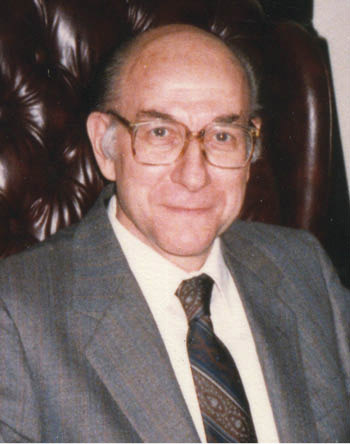This article was originally published on the Department of Mathematics’ website in 2009 to celebrate the 40th anniversary of the moon landing. Richard Arenstorf, professor emeritus of mathematics, died in 2014.

The U.S. is celebrating the moon landing that occured 40 years ago on July 20, 1969.
Before that could happen, as the National Aeronautics and Space Administration (NASA) worked feverishly to meet Pres. John F. Kennedy’s goal of landing a man on the moon in five years, it had a daunting array of engineering problems to solve. But it also had a major mathematical obstacle to overcome.
In order to determine the path that the Apollo spacecraft would take in its journey from the earth to the moon, NASA scientists had to come up with a new solution for a difficult mathematical problem, called the three-body problem, that had been studied for more than 300 years by a number of famous mathematicians, including Euler, Lagrange and Poincare.
Richard Arenstorf, professor emeritus of mathematics, was the person who came up with the solution that the program needed.
Two-body problems – predicting the motions of two celestial bodies moving under the influence of each other’s gravity when you know their respective masses, initial positions and velocities – are relatively easy to solve. However, it becomes extremely difficult when you add a third object. In fact, the three-body problem is so difficult that it has only been solved for a few special cases.
For the Apollo project, the three bodies in question were the earth, the moon and the spacecraft. NASA’s problem was to determine the influence that the gravitational fields of the earth and the moon would have on the spacecraft as it traveled between them in order to determine when to launch and how much thrust to apply to reach the moon and then return.
In 1957 – a year after receiving his Ph.D. in mathematics (magna cum laude) from the University of Mainz – Arenstorf moved to the Army Ballistics Missile Agency in Huntsville, Ala., to join the science cadre working with Werner von Braun. Using a computer, he solved a special case of the thee-body problem that provided the mission with the information it needed. His solution consisted of a set of closed figure-eight trajectories that pass arbitrarily close to two celestial objects. These are now known as “Arenstorf Periodic Orbits.” In 1966, he was given the NASA Medal for Exceptional Scientific Achievement for his contribution.
Arenstorf left NASA in 1969 to join the mathematics department at Vanderbilt where he continued to conduct research on celestial mechanics until he retired 16 years ago. He has continued his mathematical studies, but these days they involve number theory and are completely abstract and theoretical.